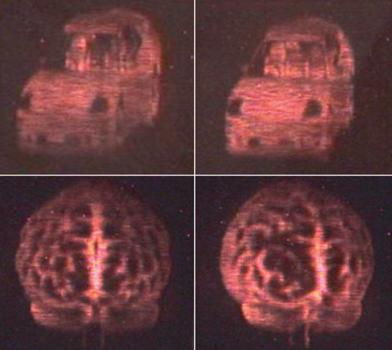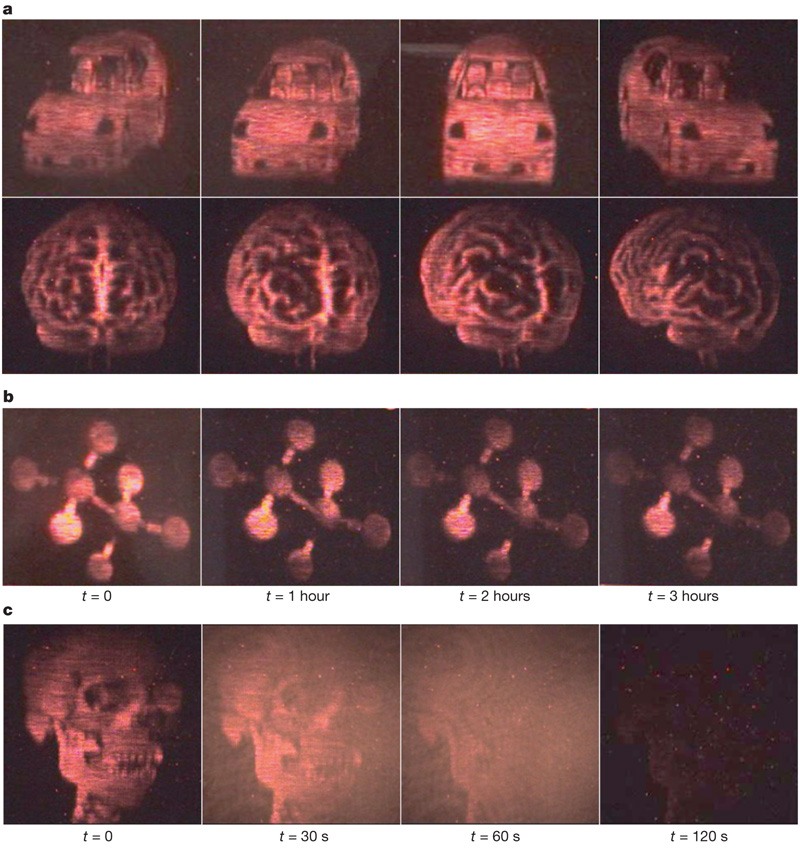Holograms could soon help monitor surgeries after a faster way to make XNUMXD simulations was found

Holograms could soon help monitor surgeries after a faster way to make XNUMXD simulations was found. The journal Nature reported a breakthrough by American researchers who developed innovative materials with which holograms could be created from real photographs within minutes. The quality of the resulting film is similar to that of a TV broadcast and the display can also be projected on large screens.
The technological problems associated with the production of XNUMXD videos have so far limited the use of holograms to designated areas in Lebedev, but a photorefractive polymer developed by Sabas Tai and his colleagues at the University of Arizona in Tucson may change the situation because it removes some of the obstacles on the way to the production of holograms.
According to the existing method so far, reflected laser light is combined with a second laser beam and single images are created, a delicate and complex process. However, in a study in Nature, they describe the film made of a thin polymer on which the image from the lasers can be "written" within minutes and it can also be erased quickly and used to take a new image. The holes remained stable even after hundreds of writing and erasing.
The ability to update the images means that surgeons can use them as guides during operations and pharmaceutical companies can use this technology to study molecular interactions to simulate new drugs.
The team was able to automate the process of capturing, writing, and erasing the images in systems that can receive input from MRI, CT, aerial or satellite photographs, and microscopes. The team made a video showing these images, and the end result is a holographic recording system, although the quality is not very high and is similar to televisions broadcasting in the American NTSC system.
Currently, the researchers, in collaboration with the high-tech company Nito-Denko, have succeeded in developing 10D monitors with a size of 10 by XNUMX centimeters, however in an article in Nature they write that there is no technological limit to the size of the monitor, because these films can be produced in any size and several of them can be joined together .


9 תגובות
A screen came out with VOXELS instead of pixels: a voxel = a pixel that emits different light in every direction and it looks like a real XNUMXD. There is a video about it in God's Tech Gadgets
Roy and Matan:
A normal hologram is also photographed on a surface.
Its uniqueness compared to a regular photograph is the way it transmits the light that makes it look different from every direction - that's why you can also turn around the picture and see it from a different angle every time.
It seems to me that the reference is to a polymer that can preserve the complex values of the beam itself (ie also the phase of the Fourier transform).
(Unlike normal films that preserve only the amplitude)..
Roy and Matan -
If I understood correctly from a quick reading of the article, it is a polymer surface that reflects light in different ways. The researchers in the article project light rays onto it, and they are reflected at different angles, so that a three-dimensional image is created above the surface.
If it's XNUMXD, why are they talking about surfaces and not cubes?
Maybe I'm unique but from what I understand it's not real XNUMXD I can't turn around the screen and see it from another side
If anyone understands the subject, please enlighten me
Thanks
Michael,
according to the article, in the last row the researchers showed that they could erase the image from the polymer in a short time.
What does the table represent and what is the reason for the confusion in the last line?
Is there a link to the source?